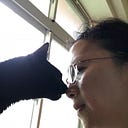Mangoes
Besides watermelon, Taiwan’s summer fruit is mango! Whether it is fresh mango, mango smoothie, or mango ice, the sweet taste is really mouth-watering! The “Lover Fruit” (suāinn-á-tshenn or suāinn-á-tshinn in Taiwanese) made by pickling immature “native mango” with sugar is also a very popular dessert. However, mangoes are not native to Taiwan! Mango is a tropical fruit tree of the Anacardiaceae family native to India, Pakistan, the Philippines and Bangladesh. The Chinese “Mango” is a transliteration of English Mango, and English is derived from Malayalam (one of the official languages of India). According to historical records, India began to grow mangoes more than 4,000 years ago; it was introduced to the Malay Islands in the fourth and fifth centuries BC, and the Portuguese introduced mangoes to the world in the 16th century. In 2014, the country that produced the most mangoes in the world was India, followed by China in second place and Thailand in third place. In Tamil Nadu of India, mango, banana and jackfruit are known as the three royal fruits.
Although mangoes distribution all over the world are attributed to the Portuguese, the mangoes from Taiwan were introduced by the Dutch in 1561, so it is commonly called “Huan suāinn”(meaning mangoes brought by barbarian). In the Qing Dynasty, many people who came to Taiwan from the mainland had eaten mangoes. In 1698 Yu Yonghe’s “Small Sea Travel Diaries’’(裨海紀遊) also mentioned mango. Since the emperor had never eaten mangoes and had no refrigeration technology at the time, on April 29th, 1719, the governor of Fujian Youlong Lu tributed some dried mangoes to the emperor. He also wrote some descriptions as, “Sweet with a little sour taste. Its honey soaking and salt soaking are not as good as the original taste. Cut into strips and dried, the original flavor is slightly preserved.” However, the emperor did not appreciate it at all, and said: “I have seen it, it is nothing useful, don’t send it again. “! Seeing this, I really want to help Emperor Kangxi to order a plate of mango ice, and then send it to him through the time machine! In terms of production volume, mangoes were the seventh largest fruit in the world in 2014; there are tomatoes, watermelons, apples, grapes, oranges, and coconuts in front of mangoes. In Taiwan, mango is the third-largest fruit grown in the area and the fourth-largest in production. But these are not all “native mangoes’’! Currently, nearly 90% of the mangoes produced in Taiwan are not “native” mangoes, but “improved varieties” such as Irwin and Chiin Hwang.
How did these mangoes come to Taiwan? The Irwin mango was introduced from Florida in 1954 by the Sino-American Joint Commission on Rural Reconstruction (JCRR). At the same time, it also introduced Haydn, Kate and other varieties, which were gradually planted, improved, produced and promoted throughout Taiwan. Irwin mango is loved by everyone because of its bright color, thin skin, thin flesh, less fiber, and sweetness and sourness. At present, 80% of the mangoes grown in Taiwan are Irwin mangoes, and it is also the main force in the export of Taiwanese mangoes. In 2014, the export sales of Irwin mangoes were second only to pineapples, and Tainan’s Yujing District and Nanhua District are hometowns of mangoes.
The first person to successfully plant Irwin mango was Mr. Zheng Hanchi from the Douliuzai tribe, Yujing District, Tainan City. In 1962, the JCRR tried to promote mangoes introduced from Florida. At that time, many people were afraid to plant new varieties because they were afraid of them needing extra care. Only Zheng Hanchi bravely tried and invented the bagging method to prevent fruit flies. At that time, no one had seen Irwin mangoes. He sold them in the city. The owner of the fruit shop didn’t recognize them. He named them “Treasure Fruits” and they were sold out soon. So Mr. Zheng was hailed as the “Father of Taiwan Irwin Mango.” In 2000, mango, along with Taiwanese Tilapia, phalaenopsis, and tea, were selected as Taiwan’s four flagship export products. Exported to Japan in 2005, it became the favorite imported fruit of Japanese consumers.
As for Chiin Hwang mango, it symbolizes the pride of Taiwanese fruit farmers. The Chiin Hwang mango was bred by the fruit farmer Mr. Chiin Hwang Huang in 1966 through the cross breeding of Irwin and White varieties. It is the largest of all mangoes in Taiwan, and one can weigh more than a kilogram! In addition to Irwin, Chiin Hwang is also a very popular export product.
Since 1975, farmers have discovered that some mango trees only bloom but do not bear fruit, and this problem is getting worse! Later, the National Taiwan University scientists found that bees are not the pollinators of mangoes, but flies (especially the blow flies) are. In 1994, the Tainan District Agricultural Research and Extension Station developed artificial feed to attract flies, so there was no need to put stinky fish under the trees to attract flies anymore.
Have you ever heard the saying that “mangoes are poisonous and should not be eaten by people with sensitive physical conditions”? It may be because mango is a plant of the Anacardiaceae family. The sap of its stems and leaves contains urushiol. Some varieties have a higher content of urushiol and people with sensitive skin can cause contact dermatitis. That’s why it is said!
